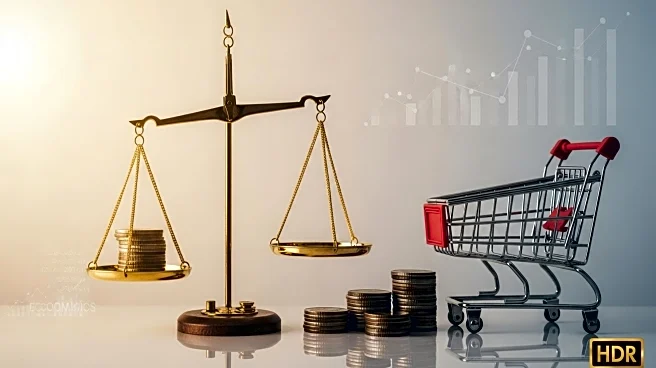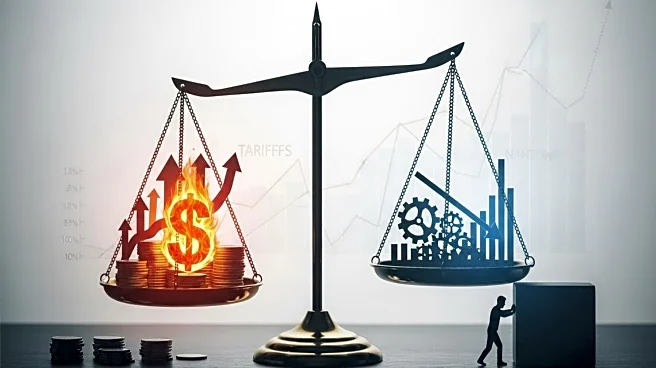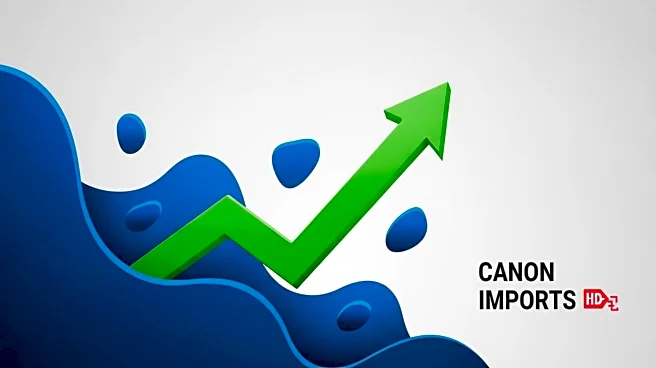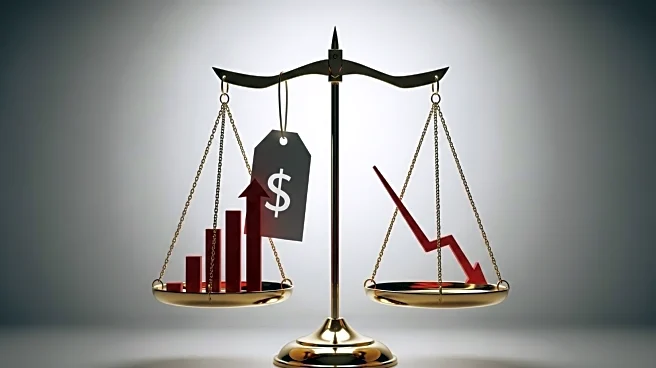What's Happening?
The U.S. Bureau of Economic Analysis has released data indicating a rise in personal income and spending for July 2025. Personal income increased by $112.3 billion, marking a 0.4% monthly growth rate. Disposable personal income, which accounts for personal income minus current taxes, rose by $93.9 billion, also reflecting a 0.4% increase. Personal consumption expenditures (PCE) saw a significant rise of $108.9 billion, or 0.5%, driven by increased spending on both services and goods. The PCE price index, excluding food and energy, rose by 0.3% from the previous month and 2.9% from the same month last year. The personal saving rate remained steady at 4.4%, with personal savings totaling $985.6 billion.
Why It's Important?
The increase in personal income and spending is a positive indicator for the U.S. economy, suggesting consumer confidence and economic stability. Higher personal income and spending can stimulate economic growth, as consumer expenditures contribute significantly to the GDP. The steady saving rate indicates that while consumers are spending more, they are also maintaining a level of financial prudence. This balance is crucial for sustaining economic momentum without leading to excessive debt accumulation. The data also highlights the impact of wage growth in services-producing industries, which can influence labor market dynamics and wage policies.
What's Next?
The continued monitoring of inflation and wage growth will be essential for policymakers to ensure economic stability. The Federal Reserve may consider these data points in its monetary policy decisions, particularly regarding interest rates. Businesses might adjust their strategies based on consumer spending patterns, potentially leading to increased investment in service sectors. Economists and analysts will likely focus on upcoming reports to assess whether these trends persist and how they might affect broader economic forecasts.
Beyond the Headlines
The data underscores the importance of wage growth in driving economic activity, particularly in service industries. This trend may lead to discussions on labor policies and the need for equitable wage distribution across different sectors. Additionally, the steady saving rate suggests a cautious approach by consumers, which could influence future economic resilience in the face of potential downturns.












